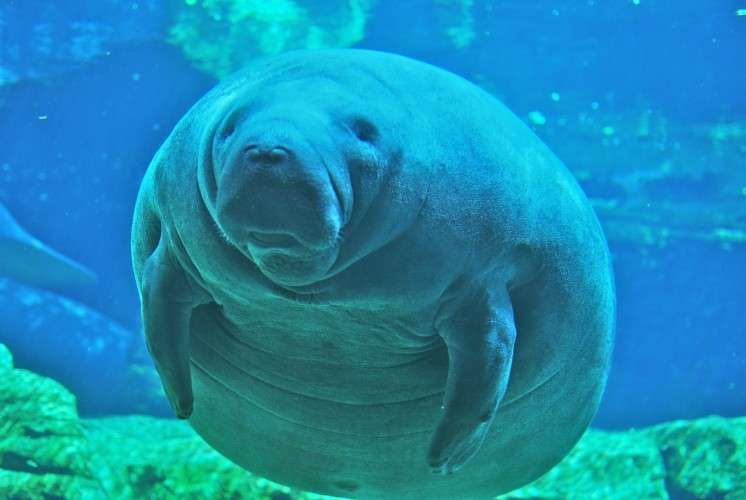Pioneering bright light research reveals bone density of sea cows for the first time

Famed for their gentle, slow-moving nature, sea cows (manatees and dugongs) are aquatic mammals closely related to the elephant. Now, their bone chemistry can be revealed for the very first time, after researchers from The University of Manchester, Diamond Light Source and College of Charleston utilised synchrotron-generated x-rays - which produce some of the brightest light in the universe - on 19 million-year-old fossil bones.
Some extinct species of sea cows weighed up to 8 tons and were 10 metres long, and are thought to have been mistaken for mythical 'sirens' by sailors in the past. Over millions of years, they evolved unusually dense bones, which counteract their buoyancy and allow them to stay close to the sea floor - and the plants on which they graze - without having to expend energy. Unlike most animals which 'hollow out' the centre of their skeletons and deposit new material around the edge of their bones, making them lighter, sea cow bones are solid and dense. This is akin to building scaffolding with solid rods of steel. The much denser bone could only be supported by an aquatic animal, given a land animal would find such skeletal mass a major obstacle for location. Sea cows therefore offer large bone samples that are perfect for the study of bone growth.
By using X-rays generated by Diamond Light Source, the UK's synchrotron science facility, the research team were able to produce detailed images of where elements of the periodic table were located within both living and fossil sea cow bones. The group then produced chemical maps which showed how these elements were combined within the bone chemistry for the very first time, and these clearly show that the distributions of calcium and zinc in the 19 million year old fossil bones were almost identical to modern bones.
"Bone remodelling is the continuous process where bone is being 'eaten' and then 'laid down'. This process is essential for maintaining bone strength and is carefully controlled by processes utilising trace elements such as zinc," said The University of Manchester's Dr. Jennifer Anné, the lead author of the study. "As such the distribution of these trace elements within microscopic bone structures can indicate bone remodelling stages, and thus being able to see these trace metal distribution could help us understand bone health implications both in humans and extinct organisms."
Fellow co-author Professor Roy Wogelius said: "One of the most astonishing finds was the similarity between the modern and fossil samples. We were going through our scans and we thought we had scanned the same sample twice! They are that similar both structurally and chemically despite being separated by 19 million years."
Fred Mosselmans, Principal Beamline Scientist on Diamond's I18 beamline, commented: "It's fantastic to see Diamond's capabilities being exploited in this way. The incredible brightness and focus that we can achieve on I18 is perfect for studying a wide range of materials, including space matter, samples from hostile environments like volcanoes, and prehistoric fossils such as the manatee remains."
This is not the first time the team has uncovered such detailed preservation of chemistry within the fossil record – they previously found similar levels in birds, dinosaurs, reptiles and plants up to 150 million years old.
Details of this research will appear in the journal Metallomics, and comes at a perfect time as Manatee Appreciation Day occurs at the end of this month (March 30th).
Journal information: Metallomics
Provided by University of Manchester





















